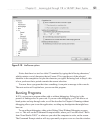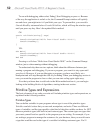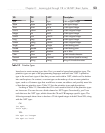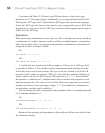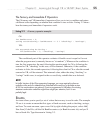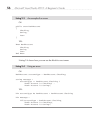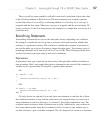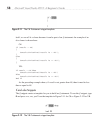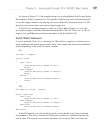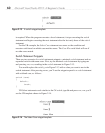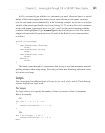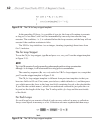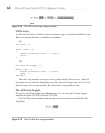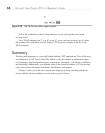
Chapter 2: Learning Just Enough C# or VB.NET: Basic Syntax 59
As shown in Figure 2-11, the template brings you to a highlighted field for specifying
the condition of the if statement. For C#, type the condition you want evaluated and press
ENTER; the snippet completes by placing your carat within the if statement block. For VB,
just place your cursor where you want to begin typing next.
In C#, the else statement snippet is similar to if. Type else and press
TAB, TAB—the
else template appears with the carat between the blocks of the else. There isn’t a VB else
snippet; just type Else between the last statement of the If and the End If.
Switch/Select Statements
A switch statement (Select Case statement for VB) tells the computer to evaluate one or
many conditions and branch appropriately. Here’s an example that will perform different
actions depending on the value of a name variable:
C#:
var name = "Megan";
switch (name)
{
case "Joe":
Console.WriteLine("Name is Joe");
break;
case "Megan":
Console.WriteLine("Name is Megan");
break;
default:
Console.WriteLine("Unknown Name");
break;
}
VB:
Dim name As String = "Megan"
Select Case name
Case "Joe"
Console.WriteLine("Name is Joe")
Case "Megan"
Console.WriteLine("Name is Megan")
Case Else
Console.WriteLine("Unknown name")
End Select
In the C# example, you can see the keyword switch with the value being evaluated
in parentheses. The code to execute will be based on which case statement matches the
switch value. The default case executes when there isn’t a match. The break keyword



